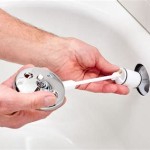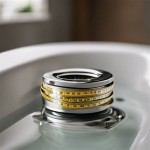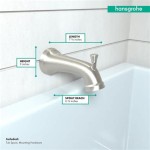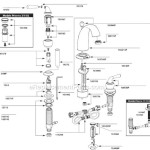Best Cleaners for Bathtub Grout Stains and Mold
Bathtub grout, that porous material filling the spaces between tiles, is highly susceptible to staining and mold growth. Its recessed location combined with constant exposure to moisture and soap residue creates an ideal breeding ground for unsightly and potentially unhealthy problems. Choosing the best cleaner requires understanding the nature of the stains and mold, the composition of your grout, and the effectiveness of various cleaning agents.
The appearance of grout can drastically affect the overall cleanliness and aesthetics of a bathroom. Stains commonly arise from mineral deposits in hard water, soap scum, and accumulated dirt. Mold and mildew, on the other hand, are living organisms that thrive in damp, poorly ventilated environments. These organisms can not only discolor grout but also pose potential health risks, especially for individuals with allergies or respiratory sensitivities.
Effective grout cleaning necessitates a multi-pronged approach. This includes regular cleaning to prevent buildup, the use of appropriate cleaning agents, and addressing any underlying moisture problems that contribute to mold growth. This article will explore various cleaning options and strategies for maintaining pristine bathtub grout.
Understanding Grout Composition and Stain Types
Before selecting a cleaner, it is crucial to understand the composition of your grout. Most bathroom grout is cement-based, a porous material that readily absorbs liquids and stains. Epoxy grout, a more expensive but less porous alternative, offers superior stain resistance and is easier to clean. Identifying the type of grout you have will guide your choice of cleaner, ensuring efficacy and preventing damage.
The type of stain also influences the selection of the appropriate cleaner. Mineral deposits, often appearing as white or chalky residue, result from hard water. Acidic cleaners are typically effective in dissolving these deposits. Soap scum, a combination of soap, body oils, and minerals, creates a dull, grayish film. Alkaline cleaners work best at breaking down the greasy components of soap scum. Mold and mildew, characterized by dark spots or a slimy texture, require cleaners with disinfecting and anti-fungal properties.
Misidentifying the stain or using an inappropriate cleaner can worsen the problem. For example, using an acidic cleaner on grout affected by mold may brighten the grout briefly, but will not kill the fungal spores, leading to rapid regrowth. Similarly, using an alkaline cleaner on mineral deposits will prove largely ineffective.
Effective Cleaning Agents for Bathtub Grout
A range of cleaning agents can be used to address bathtub grout stains and mold. These agents vary in their chemical composition, effectiveness, and potential hazards. Understanding the pros and cons of each option allows for informed decision-making.
Baking Soda Paste: Baking soda, a mild alkaline substance, is a versatile and readily available cleaning agent. When mixed with water to form a paste, it can effectively remove light stains and soap scum from grout. Its abrasive texture provides gentle scrubbing action without scratching the tile surface. To use, apply the paste to the grout, let it sit for several minutes, and then scrub with a brush. Rinse thoroughly with water.
Vinegar Solution: White vinegar, a mild acid, is effective at dissolving mineral deposits and hard water stains. A solution of equal parts white vinegar and water can be sprayed onto the grout, allowed to sit for several minutes, and then scrubbed with a brush. Vinegar's acidic nature can etch certain types of natural stone tiles, so it is essential to test the solution on an inconspicuous area first. Vinegar is particularly effective against calcium and lime buildup often prevalent in hard water areas.
Hydrogen Peroxide: Hydrogen peroxide, a readily available antiseptic and bleaching agent, can help lighten grout stains and kill mold spores. A 3% solution of hydrogen peroxide can be sprayed directly onto the grout, allowed to sit for 10-15 minutes, and then scrubbed with a brush. Hydrogen peroxide is a relatively gentle bleaching agent, but it can still discolor colored grout or some types of tile. Testing is recommended.
Bleach Solution: Bleach, a powerful disinfectant and bleaching agent, is highly effective at killing mold and removing stubborn stains. However, it should be used with caution due to its potential to irritate the skin and respiratory system. A solution of one part bleach and ten parts water should be applied to the grout, allowed to sit for 10-15 minutes, and then scrubbed with a brush. Proper ventilation is essential when using bleach, and gloves should be worn to protect the skin. Bleach can also fade colored grout, so testing is crucial before widespread application. Furthermore, mixing bleach with ammonia or other cleaning agents can produce toxic fumes and should be strictly avoided.
Commercial Grout Cleaners: Various commercial grout cleaners are available, formulated to specifically target grout stains and mold. These cleaners often contain a blend of surfactants, solvents, and bleaching agents. Follow the manufacturer's instructions carefully when using commercial grout cleaners. Some products may require specific application techniques or safety precautions. Read the label thoroughly before application. Some commercial cleaners have harsh chemicals, so it's important to ensure adequate ventilation. Always spot test in an inconspicuous area before cleaning the entire grout surface.
Steam Cleaners: Steam cleaners use pressurized steam to loosen dirt and grime from grout. The high temperature of the steam can also kill mold and mildew spores. Steam cleaning is a chemical-free option that can be effective for removing light stains and disinfecting grout. However, steam cleaners may not be as effective on heavily stained or mold-infested grout. It's important to use caution as the steam can be very hot and cause burns.
Preventive Measures and Long-Term Grout Care
Maintaining clean bathtub grout requires more than just occasional cleaning. Implementing preventive measures can significantly reduce stain buildup and mold growth, minimizing the need for harsh cleaning agents and prolonging the life of your grout.
Regular Cleaning: Wiping down the shower walls and grout after each use helps remove soap scum and moisture, preventing the buildup of stains and mold. A simple squeegee can be used to remove excess water from the shower walls and floor. This simple step radically reduces the breeding grounds for mold and mildew. Regularly rinsing surfaces is essential to preventing the buildup of harmful bacteria.
Proper Ventilation: Adequate ventilation is crucial for preventing mold growth. Ensure proper airflow in the bathroom by opening windows or using an exhaust fan during and after showers. This helps remove moisture from the air, reducing the humidity that promotes mold growth. Consider leaving the shower door or curtain slightly open after use to facilitate air circulation.
Sealing Grout: Applying a grout sealer creates a protective barrier that prevents water and stains from penetrating the grout. Grout sealers are available in various formulations, including penetrating sealers and surface sealers. Penetrating sealers soak into the grout, filling the pores and preventing water absorption. Surface sealers create a thin layer on top of the grout, providing a protective barrier. Reapply grout sealer every one to two years, or as recommended by the manufacturer, to maintain its effectiveness. Proper application is essential to ensure optimal sealant performance.
Addressing Leaks Promptly: Leaks around the bathtub, showerhead, or faucet can contribute to excessive moisture and mold growth. Repair any leaks promptly to prevent water damage and mold problems. Regularly inspect plumbing fixtures for leaks and address them as soon as they are detected. Even small, seemingly insignificant leaks can create a favorable environment for mold growth.
Using Shower Sprays: Daily shower sprays contain chemicals that inhibit mold and mildew growth. These sprays can be applied after each shower to help keep the grout clean and prevent stains. Choose a shower spray that is specifically formulated for bathroom surfaces and that is safe for your grout and tile. Follow the manufacturer's instructions carefully when using shower sprays.
Choosing the Right Soap: Using bar soaps can contribute to soap scum buildup on grout. Consider switching to liquid soaps or body washes, which tend to leave less residue. Liquid soaps and body washes are generally easier to rinse away than bar soaps, reducing the amount of soap scum that accumulates on grout and tile surfaces. The type of soap used has a significant impact on cleanliness.
By understanding the nature of grout stains and mold, selecting appropriate cleaning agents, and implementing preventive measures, it is possible to maintain clean and healthy bathtub grout. Consistent effort and informed choices are key to achieving long-term results.

Oxiclean Bleach Mold Mildew Bathroom Stain Remover Trigger Spray

Active Mold Stain Remover Gel Cleaner Heavy Duty For Front Loader Washing Machine Seal Bathroom Grout Shower Caulk Load

How To Clean Bathroom Tile And Grout Reviews By Wirecutter

Clearance Mold Stain Remover Gel Cleaner Heavy Duty For Front Loader Washing Machine Seal Bathroom Grout Shower Caulk Best Home

10 Best Shower Cleaners Of 2025 Reviewed

5 Ways To Remove Mold From Grout

How To Clean Mold In Shower Grout Tips And Tricks Certified Care

11 Best Shower Cleaners Tested Reviewed Nbc Select
10 Best Grout Cleaners To Get Your Bathroom Sparkling

How To Clean A Moldy Shower Super Satisfying With Me
Related Posts








